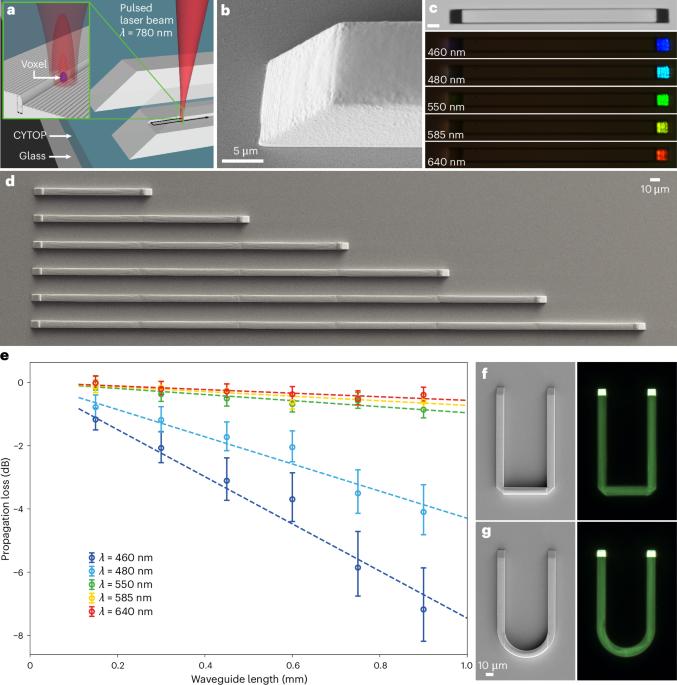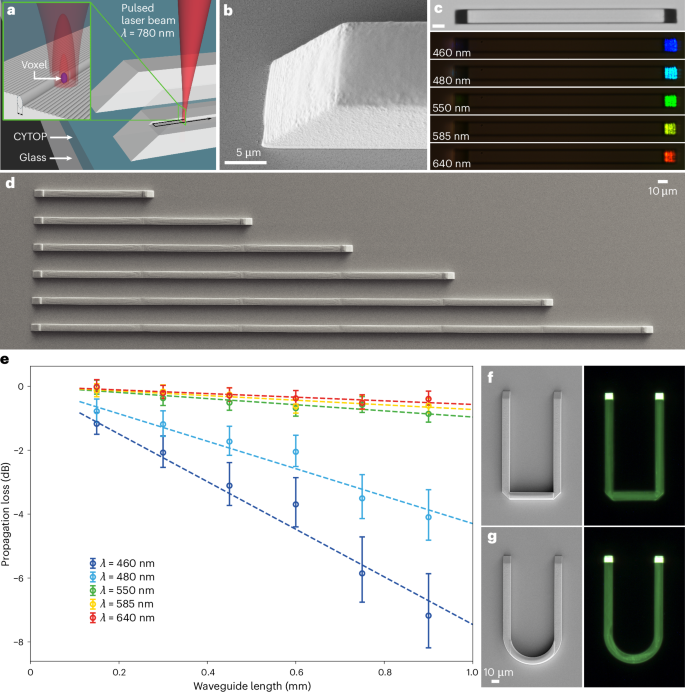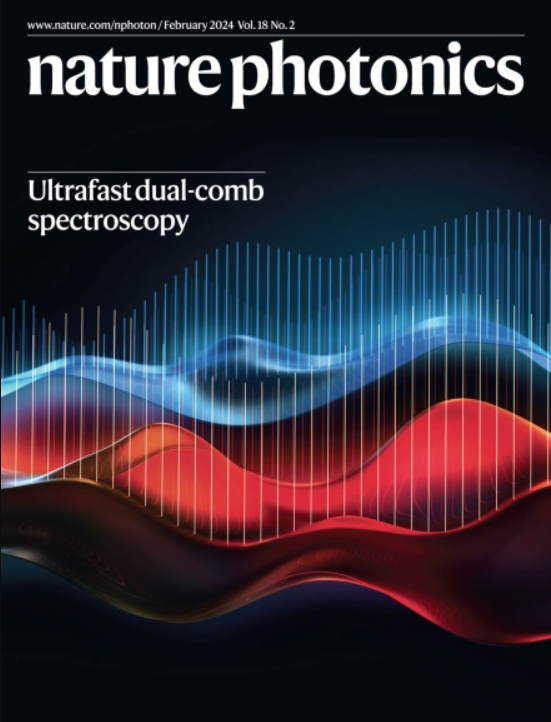Microscale generation and control of nanosecond light by light in a liquid crystal
IF 32.9
1区 物理与天体物理
Q1 OPTICS
引用次数: 0
Abstract
The softness of liquid crystals, their anisotropic material properties, their strong response to external fields and their ability to align on patterned surfaces makes them unsurpassable for a number of photonic applications, such as flat-panel displays, light modulators, tunable filters, entangled photon light sources, lasers and many others. However, the microscale integration of liquid crystals into microphotonic devices that not only perform like silicon photonic chips but also use less energy, operate exclusively on light, are biocompatible and can self-assemble has not been explored. Here we demonstrate a soft-matter photonic chip that integrates tunable liquid-crystal microlasers and laser microprinted polymer waveguides. We demonstrate the control of the liquid crystal’s microlaser emission by nanosecond optical pulses and introduce the concept of resonant stimulated-emission depletion to switch the light by light. This opens a way to design an entirely new class of photonic integrated devices that can be made both biodegradable and biocompatible with a rich variety of applications in medicine, wearable photonics and logic circuits. We anticipate that soft-matter photonic circuits will not only outperform solid-state photonics in terms of a huge reduction in the number of production steps, the use of non-toxic chemicals and a better energy efficiency, but also could open an avenue to the paradigm of soft-matter photonics. Combining advanced photonics with reconfigurable liquid crystalline self-assembled structures allows control of a liquid crystal’s microlaser emission by nanosecond optical pulses and the ability to switch off the laser emission from the liquid crystal using the resonant stimulated-emission depletion process, providing a design for a new class of photonic integrated devices.


液晶中的光在微尺度上产生和控制纳秒级光
液晶的柔软性,它们的各向异性材料特性,它们对外部场的强响应以及它们在图案表面上对齐的能力使它们在许多光子应用中无与伦比,例如平板显示器,光调制器,可调谐滤波器,纠缠光子光源,激光器和许多其他应用。然而,将液晶集成到微光子器件中,不仅表现得像硅光子芯片,而且消耗更少的能量,只对光工作,具有生物相容性和自组装能力,这些都还没有被探索过。在这里,我们展示了一种集成了可调谐液晶微激光器和激光微印刷聚合物波导的软物质光子芯片。我们演示了用纳秒级光脉冲控制液晶的微激光发射,并引入了共振激发发射耗尽的概念来实现光对光的切换。这为设计一种全新的光子集成器件开辟了一条道路,这种器件既可生物降解,又具有生物相容性,在医学、可穿戴光子学和逻辑电路中有着丰富的应用。我们预计,软物质光子电路不仅在生产步骤数量的大幅减少、无毒化学品的使用和更好的能源效率方面优于固态光子,而且还可以为软物质光子学的范例开辟一条道路。
本文章由计算机程序翻译,如有差异,请以英文原文为准。
求助全文
约1分钟内获得全文
求助全文
来源期刊

Nature Photonics
物理-光学
CiteScore
54.20
自引率
1.70%
发文量
158
审稿时长
12 months
期刊介绍:
Nature Photonics is a monthly journal dedicated to the scientific study and application of light, known as Photonics. It publishes top-quality, peer-reviewed research across all areas of light generation, manipulation, and detection.
The journal encompasses research into the fundamental properties of light and its interactions with matter, as well as the latest developments in optoelectronic devices and emerging photonics applications. Topics covered include lasers, LEDs, imaging, detectors, optoelectronic devices, quantum optics, biophotonics, optical data storage, spectroscopy, fiber optics, solar energy, displays, terahertz technology, nonlinear optics, plasmonics, nanophotonics, and X-rays.
In addition to research papers and review articles summarizing scientific findings in optoelectronics, Nature Photonics also features News and Views pieces and research highlights. It uniquely includes articles on the business aspects of the industry, such as technology commercialization and market analysis, offering a comprehensive perspective on the field.
 求助内容:
求助内容: 应助结果提醒方式:
应助结果提醒方式:


